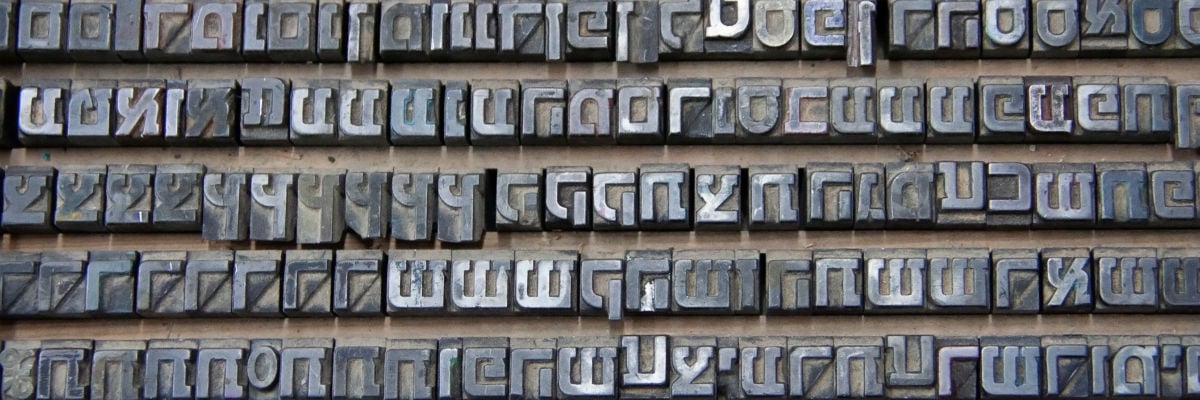
Was there anything like the Mass in the Old Testament?
We might rather ask, “Was there anything in the Old Testament that does not refer to the Mass?”
The Mass contains the completed work of the Savior in his sacrifice on the cross. All the worship of the true God in the Old Testament is summed up and fulfilled in this supreme act of worship. Further, all the events and teachings and laws of the Old Testament were to have their perfection in Christ’s saving work, which the Mass presents by an efficacious sign. That is why the risen Christ on the road to Emmaus gave the disciples the example of how to celebrate the Mass by explaining all that referred to him in the writings of Moses, the prophets, and the Psalms. As the cycle of readings heard throughout the liturgical year reminds us, the Mass is the fulfillment of all these things accomplished in Christ’s passion and in the sacrifice of his body and blood.
From the sacrifice of Abel, the one unjustly slain, to the offering of bread and wine by Melchizedek, the immortal high priest, to Abraham’s willingness to sacrifice his only son, to the Passover lamb, to all the offerings of the temple, bloody and unbloody—all the worship of the ancient law given to Adam, Noah, Abraham, and Moses is summed up in the Mass. This is why Our Lord said, “With a desire I have desired to eat this supper with you before I suffer” (Luke 22:15). The Mass contains, under concise symbols, the essence of the whole story of our salvation: brought to completion in the body and blood that were born of the Virgin Mary, were crucified under Pontius Pilate, were raised in glory, and are coming again.
Not only are there things in the Old Testament that remind us of the Mass, but the very substance of the whole of it is found in the eucharistic worship instituted by Christ.
How, then, is the Mass organized?
The order of the parts of the Mass is not alphabetical or numerical, nor is it chronological or proportional. No, the Mass is not organized by time or space or by letters or numbers; rather, it is in accordance with the ordering of all things under God. This is not surprising, since the Mass contains the fulfillment of our Savior and Creator’s promise: “When I am lifted up from the earth I will draw all things to myself” (John 12:32).
A fifth-sixth-century saint named Denis the Areopagite wrote a treatise on the worship of the Church that stands as the oldest, most authoritative, and most influential one in both East and West. Known as On the Ecclesiastical Hierarchies, it provides the standard for understanding the sacred mysteries of common, public prayer of the sacraments, and throughout the Church’s history, the Doctors of the Church (in particular St. Thomas Aquinas) have made deep use of its teaching.
It uses a threefold division to express the nature of things, especially spiritual progress and activity. This division explains why the liturgy of the Church is ordered in the way it is. The first stage of spiritual progress is purification or purgation, the second stage is illumination, and the third stage is union. In the different parts of the Mass, as in the life of the soul, all three of these movements are at work at all times, yet one of them predominates according to the sacred rite being accomplished.
In order to come into union with God, Christians must first be purified of any obstacle to the divine life in them—that is, from sin and from any disorder in their imagination and emotions. To this stage of progress belong the things we associate with the first part of the Mass, the Liturgy of the Word. The initial acts, the censing of the altar, the Sunday sprinkling of holy water, the prayers of repentance and of petition for the needs of the whole Church—these clarify and cleanse our intentions, separating them from the atmosphere of the world and centering them on the Lord.
The readings, too, have this purifying effect, as their holy words and considerations replace our wandering and vain imaginations and stir up our desire for heavenly things. And the homily is not just an instruction; it is a freeing of our minds from obsessive thoughts, distractions, and useless or unwholesome memories.
Being purged of sin and defects, the light of Christ can shine more brightly in our minds, and so we come to the second movement, that of illumination. We are now vigilant, with our lamps lit, on the watch for the return of the Bridegroom (Matt. 25:1-13). Here we intentionally undertake to offer up the gifts of bread and wine that will become our sacrifice.
Moses and the prophets and the Psalms have been explained to us by Christ in the Gospel lesson and in the words of the one who has preached to us in his person. We are no longer wandering or walking along without a goal. We know in what direction to go: to the altar of God, to his perfect sacrifice. We have been enlightened. We are ready to go in for the banquet.
This illumination of our hearts moves into union with the One we have come to know in his word, as we recognize his presence in the “breaking of the bread”—that is, in the consecration and elevation of the body and blood of the Lord and in the Holy Communion. The same faithful who a moment before were united in a greeting of peace, Christ the high priest now draws by faith and love to the whole reality of his body and blood and so produces our perfect union with him—the restful, happy, divine goal of our previous purification and enlightenment. God has taken our sacrifice, which is Christ, up to himself and us with it, so we are one in him, along with all the powers of heaven. Heaven and earth are united.
As we noted, these three stages are not ever completely separated from each other. All the parts of the Mass contain words and rites that express purgation, illumination, and union. So even though a certain stage is more evident in one part of the liturgical order, the other two are always present. For example, the words of Sacred Scripture are found in all the parts of the Mass. There are prayers of purification at the offertory, along with the purifying smoke of incense. And before we are united intimately with the Lord’s body and blood, we cry out for mercy and declare our unworthiness.
When we become aware of these three movements in the liturgy, we begin to see them also in our daily lives, viewing all things as purgative, enlightening, or perfecting in love. This is the great tradition of the “three ages” of the spiritual life, and in our work and prayer it will make the order of our lives like the order of the Mass we celebrate. And our dismissal with the priest’s blessing will usher us in to a life modeled on the Mass.
For more like this, check out our new booklet, “20 Answers: The Mass,” available for purchase at the Catholic Answers shop.



